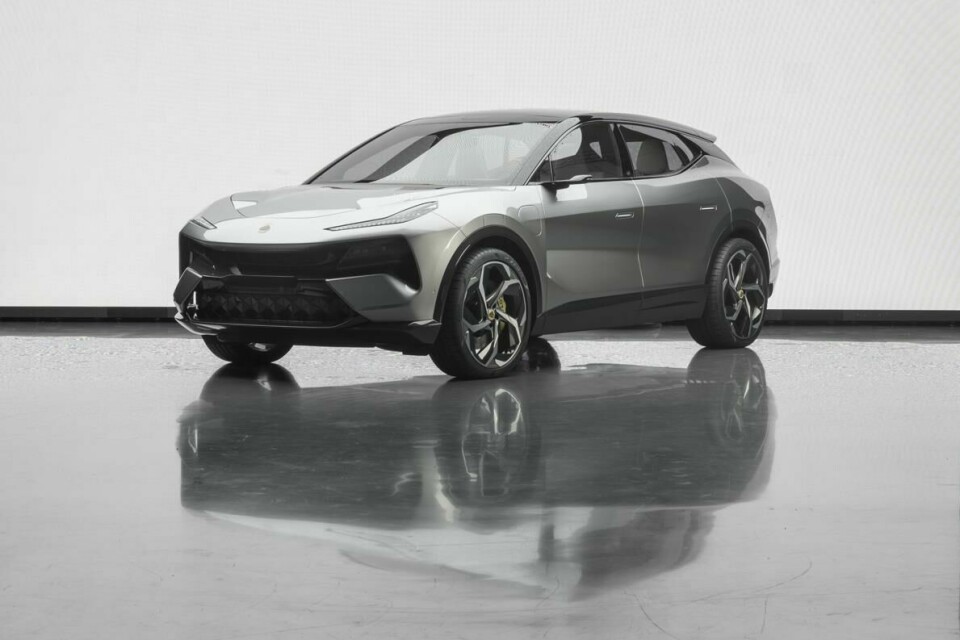
First Sight: Eletre kickstarts Lotus lifestyle range
Lotus launched its first SUV – the Eletre – to the world on Tuesday 29th March 2022 in an evening event in west London, UK. Luckily, Car Design News had already been invited to a series of previews of the large luxury lifestyle EV and interviewed its key designers. What follows is our first impressions and their thoughts…
The Eletre is the first vehicle within Lotus’s new lifestyle (non-sportscar) all-electric range and will take on the likes of the Porsche Cayenne when the first models roll off a new Chinese production line later this year, for a sub-£100,000 price tag. However, Lotus will beat its German rival to market in offering a full-electric large SUV and no other powertrain types are planned.
Up close – and upfront especially – the Eletre has lots of aero and tech details to explore. Below the strikingly slim front lights on the bonnet and the sharp line that defines its nose, sits a three-dimensional hexagonal structure which stands out for its originality of form and mystery of function.
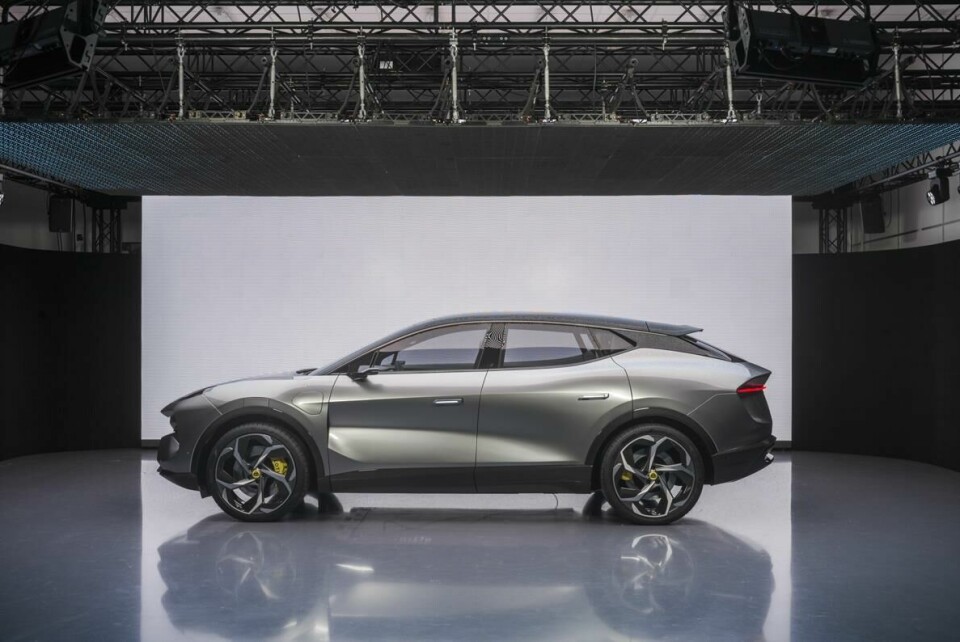
Project leader and md of the new Lotus Tech Creative Centre design studio in Coventry, UK, Ben Payne, explains that these hexagons open and close as necessary to cool the electric motor and reduce drag. “Active aero is not new,” he told Car Design News, “but showing it on the surface of the vehicle rather than behind a grille is. The design team dreamt up the idea and the engineering team delivered the solution.”
Exact dimensions were not revealed before launch, but Payne says the Eletre is “within millimetres” of the Lamborghini Urus and in side profile that sporty SUV approach is apparent. Further aerodynamic details include bold sculptural vents in the bonnet – echoing similar ones in the Evija and Emira – deeply carved-out body sides behind the front wheel arch and exposed rear roof spoiler winglets.
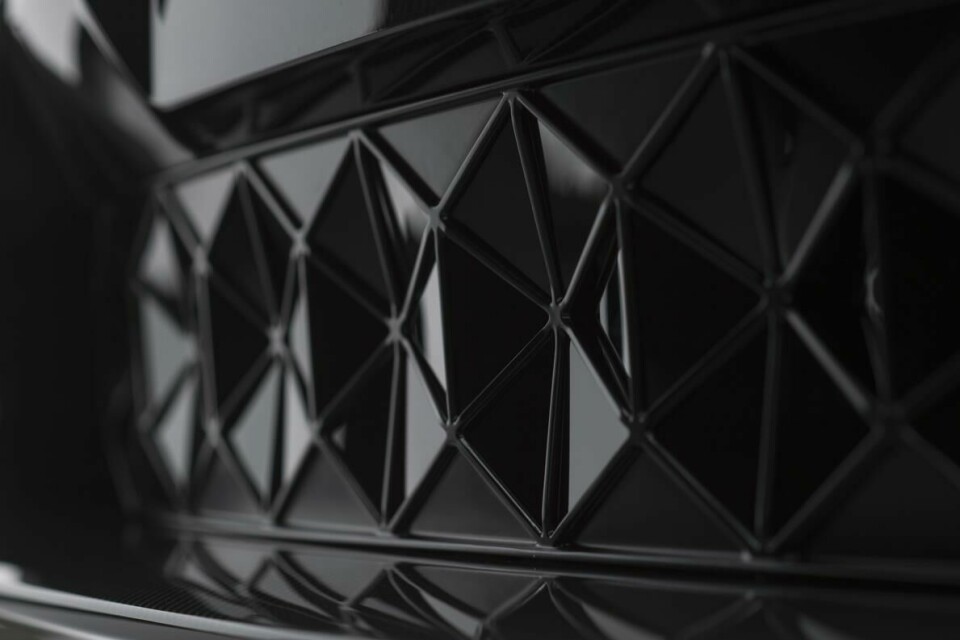
There are also more subtle holes in the rear C-pillars and collectively all are designed to improve the Eletre’s ability to cut through air. Payne continued: “We’ve pushed the door section in as far as we possibly can to create a powerful exit duct for channelling air out of the wheel arch and this also breaks up the visual mass of the product, as it is quite a large car.”
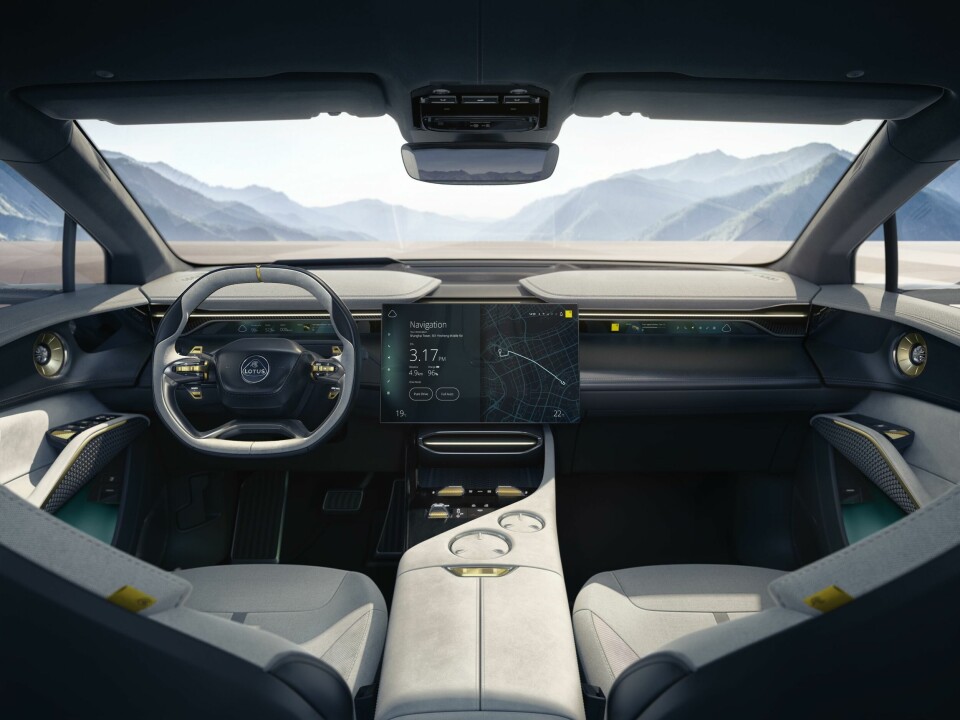
It certainly is, but the Eletre has a small front end and as its windscreen cowl has been pushed far forward, creating a large and spacious cabin. The brief for the interior was to convey sportiness, luxury and technology and at first sight it has succeeded without resorting to automotive interior design clichés in shape, colour and finish. “We have shrink-wrapped the interior around the airbags, so you have high instrument panel toppers,” said Payne.
“But in the centre those are not required, so we removed that material and created a unique divided dashboard. That theme also has a strong synergy with the split winglets on the rear of the roof, so there’s a connection from interior to exterior, where the overall theme has a visual lightness.”
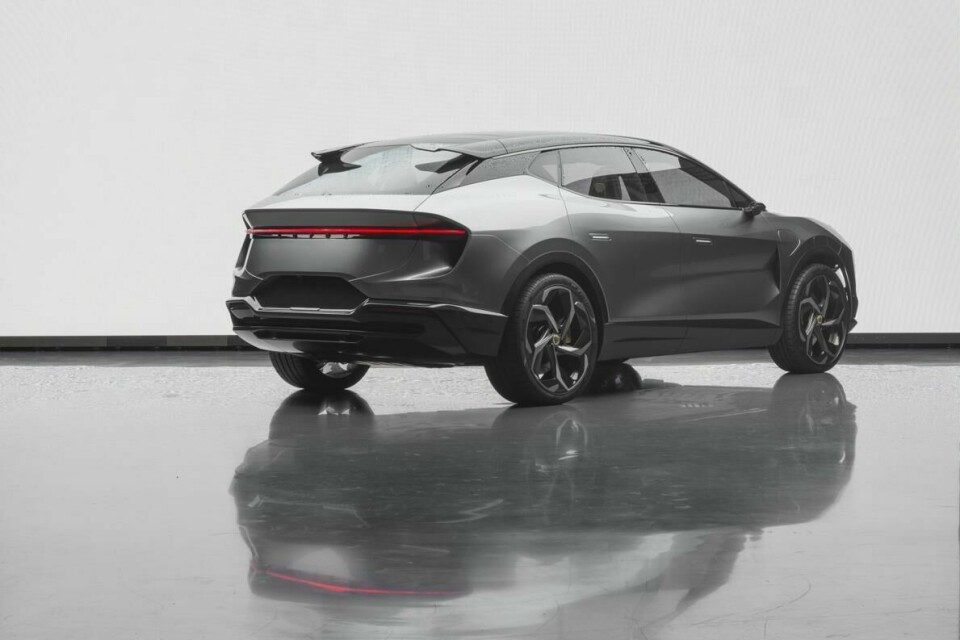
Lotus is well-known for pushing a driver-centric marketing message but interior design manager Matt Hill reckons the Eletre needed to take a slightly different approach. “There’s a fine balance to strike in our lifestyle products with performance that’s not just ‘for the drivers’,” he explained. “There is an equality of experience for the passenger with their own slim screen and a focused display for the driver with a head-up display (HUD) as well.”
Ex-Aston Martin designer Hill also points to higher quality physical switches made of cold-touch real metal to balance the digital tech, although Payne acknowledges that the overall user experience (UX) is vital for the Eletre’s success, not least with younger target buyers in Asia. It’s no surprise then to see that the Eletre has a large deployable 15.1-inch centre touchscreen, although it does at least fold away when not required.
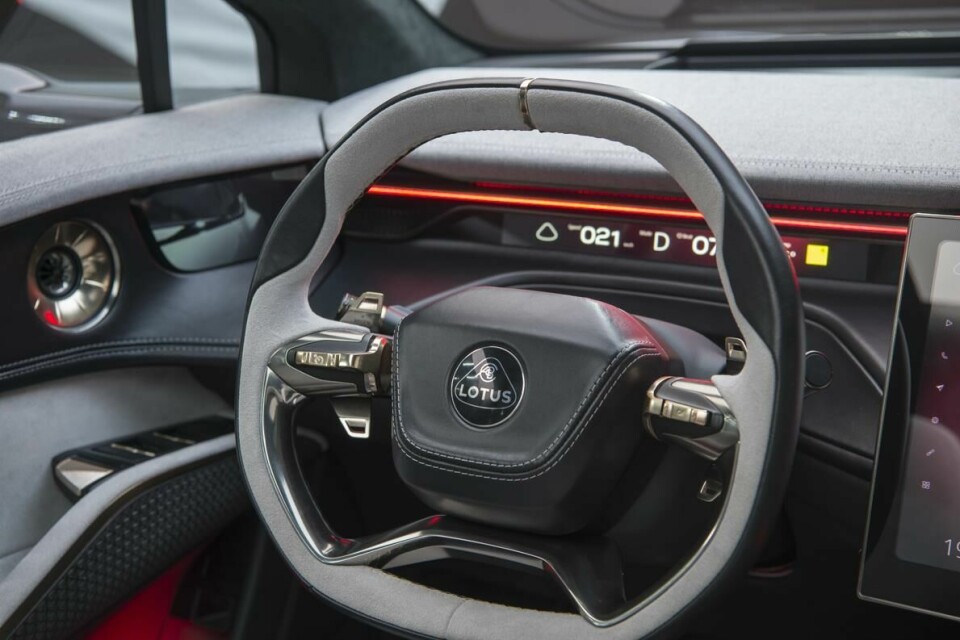
“We’re going to really start pushing beyond what people currently think UX is, which is just content for interior screens,” Payne said. “The exterior lighting is interactive too. You can adapt how you want it to appear and it communicates back. The tail lamp can show the EV’s charge function – by displaying a green flashing light – and we’re looking at exterior lighting to indicate autonomous driving modes too.”
The colour and trim palette of the Eletre is unashamedly upmarket and very varied to cater for global tastes – from the mood boards CDN has seen. The show car offers a tastefully-restrained mix of light and dark greys with brass/gold accents, which as Lotus Tech’s colour, materials and finish director, Marie-Camille Lecoq explained, considered Lotus heritage too: “Using brass against darker areas is a link to our F1 history and the gloss black and gold livery of John Player Special in the 1970s. It’s a smart way to connect to our past that isn’t too obvious.”
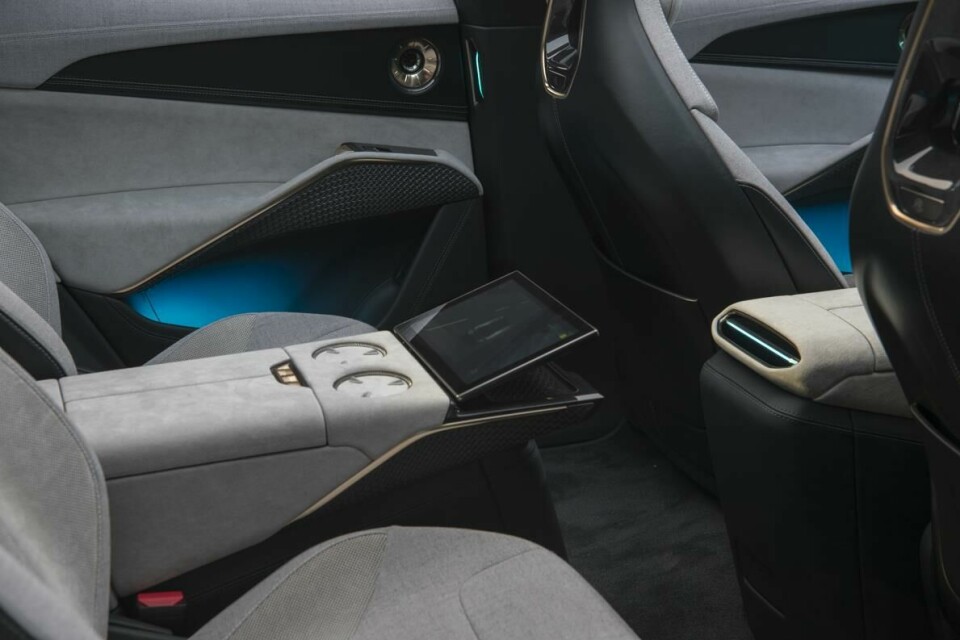
Even smarter is the option of a brand-new mixed-recycled material for the seats. “Typically when recycling you have to use one type of pre-selected yarn and a very intense process. But with mixed-recycled yarn pretty much all the clothes you find in fashion can be used. We’re the first car brand to use it.”
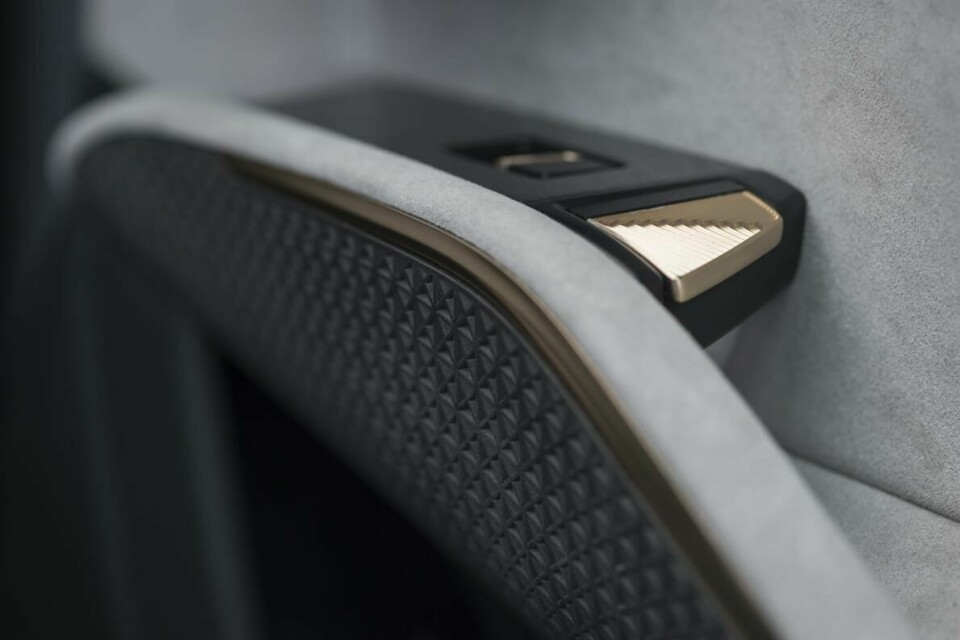
The only disappointment on this otherwise production-ready showcar is learning that the distinctive lattice-like sections under the Eletre’s centre console and lower door card areas are doubtful for production, at least initially. “These parts are 3D-printed and won’t make it into ‘job one’ production,” conceded Payne. “But we are exploring these ideas for the bespoke end of the product.” Payne is alluding to the new Lotus Advanced Performance division, which will offer limited editions and vehicle options that may yet include such 3D parts.
But even without those details, the Eletre still visually stands out among the crowded large SUV segment, while crucially offering a level of tech and full EV powertrain few rivals can yet compete with.



